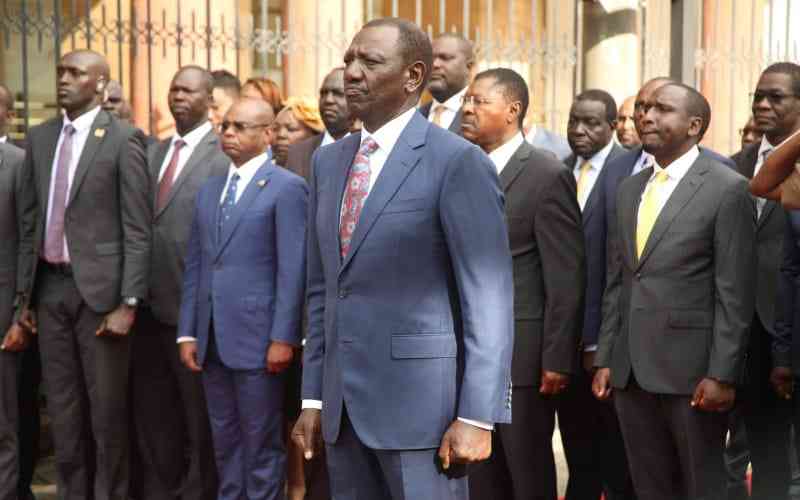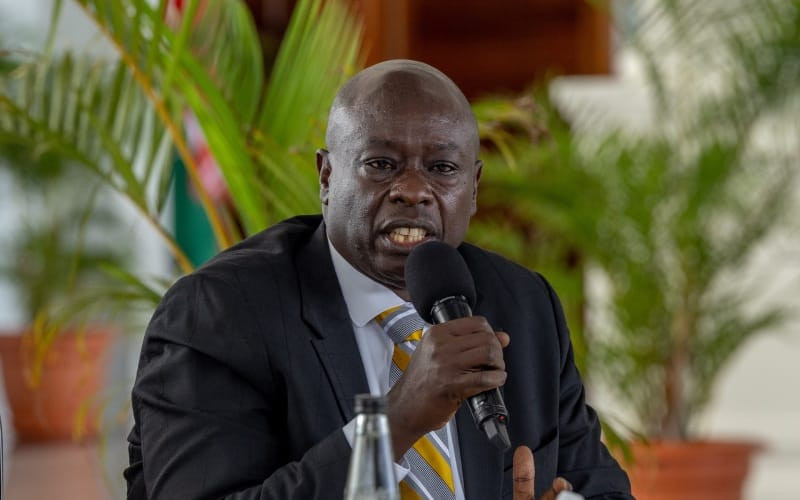By Kisemei Mutisya
After the end of the Cold War in 1989, Western powers and donors exerted political and economic pressure on African autocratic regimes to embrace multiparty democracy and market economy.
The Western powers assumed that such pressure would lead to regime change and new political dispensation. They did not anticipate communal violence and genocide as in Rwanda and Kenya. Malawi successfully held elections that overthrew Banda dictatorship while in Kenya and Rwanda, there was politically motivated violence and stalled transition. What lessons can one learn from Malawi and Rwanda with regards to donors and transitional politics?
In Malawi, Kamuzu Banda offered a referendum to determine whether Malawians wanted a single party rule or a multiparty system.
This was only after serious confrontation between textile workers and state security agencies that led to the death of more than 40 people in the capital leading to two days of rioting. Furthermore, donors’ conference called by the World Bank in Paris in May 1992 resolved to suspend all non-humanitarian aid for six months to put pressure on the Banda regime. The referendum was characterised by violence, intimidation and arrests of opposition leaders.
Malawi Young Pioneers (MYP), already incorporated into the state security agencies, did the dirty work of harassing political opponents but could not repress Malawians from choosing a multiparty.
MYP, like Kanu youth wingers but better armed, trained and facilitated by the state were disliked in Malawi and had strained relations with the Malawi Defence Forces. To be sure, MYP used to jointly train with the Mozambique National Resistance (Renamo) of Mozambique.
In Rwanda, the Rwanda Patriotic Front launched military attack in 1990 after France’s Francois Mitterrand declared that economic aid to Africa would be pegged on democratisation. Immediately, the National Revolutionary Movement for Development of Habyarimana (MNRD) adopted a new constitution allowing opposition parties. With increased activism in Rwanda, the government resorted to use of violence and arrested more than 8,000 people between October 1990 and April 1991.
Sought peace
The military just watched as the militias killed the Tutsi in Bugesera in March 1992. Diplomats and the military kept silent. The turning point was in July 1993 when the West – including the World Bank and France – resolved to suspend foreign aid unless Habyarimanas regime made peace with the militarily successful RPF.
The Habyarimana regime carefully manipulated and used Interahamwe and convinced the donors then that the civil war was tribal warfare but not before over 800,000 people were killed in 100 days.
In Kenya just like in Rwanda, the Kanu regime initially conducted mass arrests of key opposition figures and their sympathisers in the urban areas. Political rallies were banned. Kanu created private militias, such as Mungiki, Jeshi La Mzee and other criminal gangs to cause insecurity largely in urban areas.
In the rural areas, the Government created and instigated politically motivated ethnic clashes that started in the Rift Valley following series of majimbo rallies attended by key Rift Valley leaders.
They resolved that non-Kalenjin should vacate the Rift Valley and declared it a Kanu zone and a no go area for those fronting for multiparty democracy. Soon after, politically motivated tribal clashes began in Mitetei farm in Tinderet and spread to other parts of the Rift Valley.
The motive was to weaken and disfranchise communities sympathetic to the opposition. Predictably, political violence secured Kanu regime a re-election with 36.35 per cent of the vote. The victory was given international legitimacy by the Commonwealth observer group.
Stay informed. Subscribe to our newsletter
The victory was followed by a second wave of politically motivated violence directed at some communities for having voted against Kanu in the 1992 General Election. Like in Rwanda, the Kanu regime blamed the opposition for instigating the clashes. The second wave of the politically motivated clashes claimed over 100 deaths and displaced 100,000 people after spreading to Coast in 1997.
The question is: What lessons can Kenya learn from Rwanda and Malawi regarding transition to democracy?
Firstly, it was the military that paved the way for smooth transition after crashing the private militias and cleared the way for peaceful elections. In Kenya, the Provincial Administration, the police and military were collaborators in ethnic cleansing.
Secondly, rise of irregular private militias such as Mungiki was a deliberate weapon of choice to stifle transition just as the MYP and Interahamwe.
Kanu regime chose violence as a weapon of choice against opponents hence communalising the conflict and socialising Kenyans into believing that violence against political opponents carries no punishment and is acceptable. Such was to come to haunt Kenya after the 2007 post-election violence.
Thirdly, the democracy in question is donor driven and has little to do with the interests of Kenyans.
Finally, a new constitution is not a guarantee that a country could undergo a political transition.
Habyarimana introduced a new constitution to resist change with the result that the new law was carefully crafted to hoodwink the international community and secure a place for himself and his cronies hence the genocide.
—The writer is a political science lecturer at United States International University. [email protected]
 The Standard Group Plc is a
multi-media organization with investments in media platforms spanning newspaper
print operations, television, radio broadcasting, digital and online services. The
Standard Group is recognized as a leading multi-media house in Kenya with a key
influence in matters of national and international interest.
The Standard Group Plc is a
multi-media organization with investments in media platforms spanning newspaper
print operations, television, radio broadcasting, digital and online services. The
Standard Group is recognized as a leading multi-media house in Kenya with a key
influence in matters of national and international interest.
 The Standard Group Plc is a
multi-media organization with investments in media platforms spanning newspaper
print operations, television, radio broadcasting, digital and online services. The
Standard Group is recognized as a leading multi-media house in Kenya with a key
influence in matters of national and international interest.
The Standard Group Plc is a
multi-media organization with investments in media platforms spanning newspaper
print operations, television, radio broadcasting, digital and online services. The
Standard Group is recognized as a leading multi-media house in Kenya with a key
influence in matters of national and international interest.








